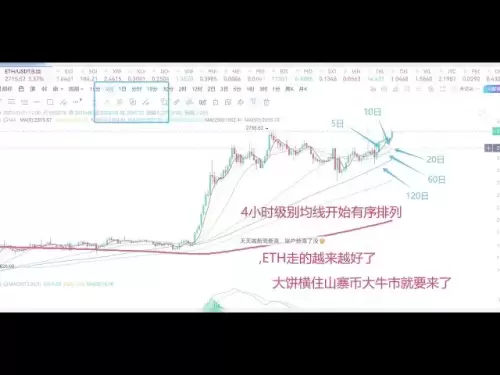-
 Bitcoin
Bitcoin $111,254.0008
0.43% -
 Ethereum
Ethereum $2,678.1596
0.72% -
 Tether USDt
Tether USDt $0.9999
0.01% -
 XRP
XRP $2.4499
0.78% -
 Solana
Solana $186.8206
4.05% -
 BNB
BNB $686.7549
0.19% -
 USDC
USDC $0.9999
0.01% -
 Dogecoin
Dogecoin $0.2485
3.10% -
 Cardano
Cardano $0.8231
2.55% -
 TRON
TRON $0.2752
-0.34% -
 Sui
Sui $3.8941
-6.33% -
 Hyperliquid
Hyperliquid $36.7383
18.61% -
 Chainlink
Chainlink $17.0358
2.61% -
 Avalanche
Avalanche $25.9275
5.10% -
 Stellar
Stellar $0.3054
1.20% -
 Shiba Inu
Shiba Inu $0.0...01571
1.94% -
 Bitcoin Cash
Bitcoin Cash $441.9566
2.33% -
 Hedera
Hedera $0.2075
1.64% -
 UNUS SED LEO
UNUS SED LEO $8.7968
-0.75% -
 Toncoin
Toncoin $3.1759
-0.41% -
 Polkadot
Polkadot $5.0026
1.98% -
 Litecoin
Litecoin $101.9365
3.00% -
 Monero
Monero $396.9217
-1.71% -
 Bitget Token
Bitget Token $5.7342
7.88% -
 Pepe
Pepe $0.0...01587
8.88% -
 Pi
Pi $0.7914
-4.69% -
 Dai
Dai $0.9999
0.00% -
 Ethena USDe
Ethena USDe $1.0002
-0.01% -
 Uniswap
Uniswap $6.6056
2.39% -
 Bittensor
Bittensor $469.8801
0.21%
How to use KDJ in a large-volume decline? Is it a bottom-fishing signal or a stop-loss signal?
During large-volume declines, use KDJ to spot bottom-fishing opportunities when lines drop below 20 and show a bullish crossover, but set stop-losses if bearish signals persist.
May 23, 2025 at 10:42 am
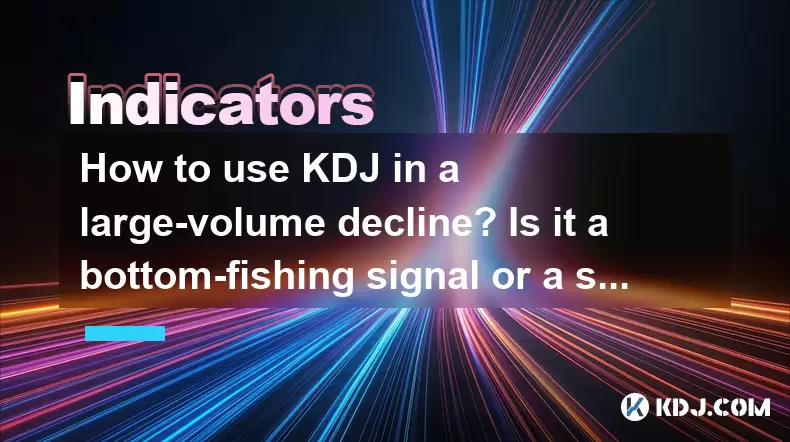
How to Use KDJ in a Large-Volume Decline? Is It a Bottom-Fishing Signal or a Stop-Loss Signal?
The KDJ indicator is a popular technical analysis tool used by traders in the cryptocurrency market to identify potential buy and sell signals. It is particularly useful during periods of significant volume declines, as it can help traders determine whether a price drop is a buying opportunity or a sign to exit their positions. In this article, we will explore how to use the KDJ indicator effectively during large-volume declines and discuss whether it should be interpreted as a bottom-fishing signal or a stop-loss signal.
Understanding the KDJ Indicator
The KDJ indicator is a momentum oscillator that combines elements of the stochastic oscillator with a moving average. It consists of three lines: the K line, the D line, and the J line. The K and D lines are derived from the stochastic oscillator, while the J line is a more sensitive measure that is calculated using the K and D lines.
- K Line: The K line is the fastest line and represents the current market momentum.
- D Line: The D line is a moving average of the K line and is used to smooth out the K line's fluctuations.
- J Line: The J line is calculated as
J = 3D - 2Kand is used to identify overbought and oversold conditions more quickly than the K and D lines alone.
Identifying Large-Volume Declines
A large-volume decline in the cryptocurrency market is characterized by a significant drop in price accompanied by a substantial increase in trading volume. This often indicates a shift in market sentiment and can be a critical point for traders to assess their positions.
To identify a large-volume decline, traders should:
- Monitor the trading volume on their chosen cryptocurrency exchange.
- Look for a sudden spike in volume that coincides with a sharp price drop.
- Use technical analysis tools, such as volume indicators, to confirm the increase in trading activity.
Using KDJ During Large-Volume Declines
When a large-volume decline occurs, the KDJ indicator can provide valuable insights into the market's direction. Traders should pay close attention to the following aspects of the KDJ indicator:
- Overbought and Oversold Levels: The KDJ indicator typically uses levels of 80 and 20 to identify overbought and oversold conditions, respectively. During a large-volume decline, if the KDJ lines fall below 20, it may indicate that the market is oversold.
- Crossing of K and D Lines: A bullish crossover occurs when the K line crosses above the D line, suggesting a potential reversal in the downtrend. Conversely, a bearish crossover occurs when the K line crosses below the D line, indicating a continuation of the downtrend.
- J Line Movement: The J line can provide early signals of a potential reversal. If the J line moves from below 20 to above 20, it may signal that the market is recovering from an oversold condition.
Is KDJ a Bottom-Fishing Signal During Large-Volume Declines?
Bottom-fishing refers to the strategy of buying assets that have experienced a significant price drop in the hope of a rebound. During a large-volume decline, the KDJ indicator can be used to identify potential bottom-fishing opportunities.
To use the KDJ indicator as a bottom-fishing signal during a large-volume decline, follow these steps:
- Monitor the KDJ lines for a drop below the 20 level, indicating an oversold condition.
- Look for a bullish crossover of the K line above the D line, suggesting a potential reversal.
- Confirm the signal with the J line moving from below 20 to above 20, indicating a recovery from an oversold state.
- Consider entering a long position when these conditions are met, but always use proper risk management techniques, such as setting stop-loss orders.
Is KDJ a Stop-Loss Signal During Large-Volume Declines?
A stop-loss signal is a trigger for exiting a position to limit potential losses. During a large-volume decline, the KDJ indicator can also be used to determine when to exit a position.
To use the KDJ indicator as a stop-loss signal during a large-volume decline, follow these steps:
- Monitor the KDJ lines for a drop below the 20 level, indicating an oversold condition.
- Look for a bearish crossover of the K line below the D line, suggesting a continuation of the downtrend.
- Confirm the signal with the J line remaining below 20, indicating persistent oversold conditions.
- Consider exiting a long position when these conditions are met, especially if the price continues to decline and the volume remains high.
Practical Example of Using KDJ During a Large-Volume Decline
Let's consider a practical example of how to use the KDJ indicator during a large-volume decline in the cryptocurrency market.
- Scenario: A trader is monitoring Bitcoin (BTC) on a popular exchange and notices a significant price drop accompanied by a spike in trading volume.
- Step 1: The trader observes that the KDJ lines have dropped below the 20 level, indicating an oversold condition.
- Step 2: The trader watches for a bullish crossover of the K line above the D line, which occurs after the initial drop.
- Step 3: The trader confirms the signal by observing the J line moving from below 20 to above 20, suggesting a potential recovery.
- Step 4: The trader decides to enter a long position on BTC, setting a stop-loss order to manage risk.
In this scenario, the KDJ indicator provided a bottom-fishing signal during a large-volume decline, allowing the trader to potentially capitalize on a price rebound.
Frequently Asked Questions
Q1: Can the KDJ indicator be used in conjunction with other technical indicators during large-volume declines?
A1: Yes, the KDJ indicator can be used in combination with other technical indicators, such as the Relative Strength Index (RSI) or Moving Averages, to confirm signals and enhance trading decisions during large-volume declines.
Q2: How often should I check the KDJ indicator during a large-volume decline?
A2: It is recommended to check the KDJ indicator regularly, such as every few hours or at key trading sessions, to stay updated on market conditions and potential signals during a large-volume decline.
Q3: Are there any specific timeframes that work best with the KDJ indicator during large-volume declines?
A3: The effectiveness of the KDJ indicator can vary depending on the timeframe used. Shorter timeframes, such as 15-minute or 1-hour charts, may provide more timely signals during large-volume declines, while longer timeframes, such as 4-hour or daily charts, can offer more reliable signals for longer-term trends.
Q4: How can I adjust the KDJ settings to better suit large-volume declines?
A4: Adjusting the KDJ settings, such as the period length for the K and D lines, can help tailor the indicator to specific market conditions. During large-volume declines, traders may consider using shorter periods to capture more rapid changes in market momentum. Experimenting with different settings and backtesting can help find the optimal configuration for individual trading strategies.
Disclaimer:info@kdj.com
The information provided is not trading advice. kdj.com does not assume any responsibility for any investments made based on the information provided in this article. Cryptocurrencies are highly volatile and it is highly recommended that you invest with caution after thorough research!
If you believe that the content used on this website infringes your copyright, please contact us immediately (info@kdj.com) and we will delete it promptly.
- Pepecoin (PEPE) price breaks out of a rounded bottom on the 4-hour chart, indicating bullish continuation.
- 2025-05-23 18:00:57
- Cetus Protocol of Sui Chain Is Hacked, Draining Over $260M From LP Pools
- 2025-05-23 18:00:57
- XRP ETF Hype May Benefit Wall Street More Than Retail: Van Dell
- 2025-05-23 17:55:13
- Metaplanet Surges Amid Bitcoin Bet and Short Squeeze Threat
- 2025-05-23 17:55:13
- Pepe Set To Skyrocket 500% But Investors Focus Is On Another Coin After Analysts Forecast 5,000% Gains
- 2025-05-23 17:50:14
- Safello increases exposure to TAO in its strategic crypto reserve
- 2025-05-23 17:50:14
Related knowledge
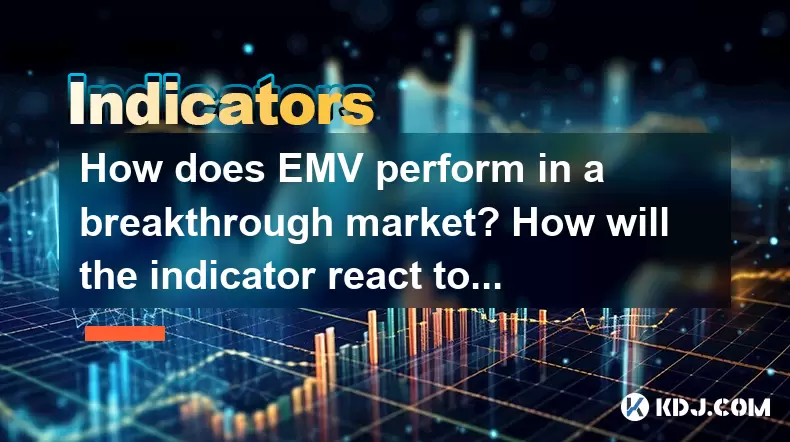
How does EMV perform in a breakthrough market? How will the indicator react to a false breakthrough?
May 23,2025 at 06:01pm
Introduction to EMV IndicatorThe Ease of Movement Value (EMV) indicator is a technical analysis tool that helps traders identify the relationship between price and volume in the cryptocurrency market. Developed by Richard W. Arms, Jr., the EMV indicator aims to measure the 'ease' with which prices move. In a breakthrough market, understanding how EMV pe...
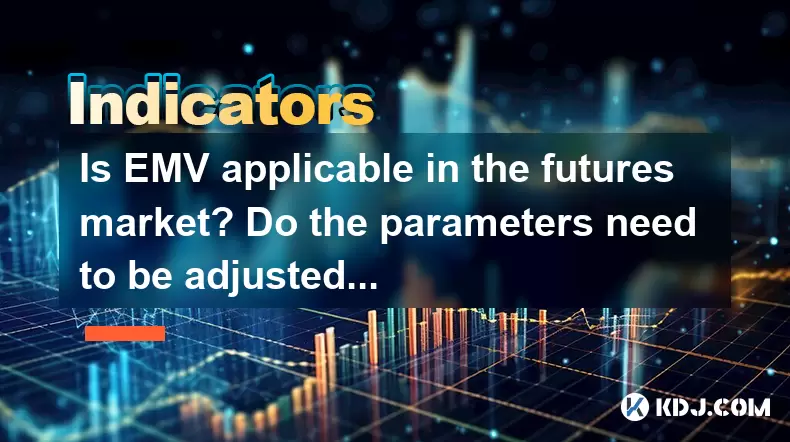
Is EMV applicable in the futures market? Do the parameters need to be adjusted in a leveraged environment?
May 23,2025 at 05:15pm
The application of Exponential Moving Average (EMV) in the futures market, particularly within a leveraged environment, is a topic that garners significant interest among traders. EMV, a type of moving average that places greater weight on recent price data, can be a useful tool for traders in the futures market. However, its effectiveness and the neces...
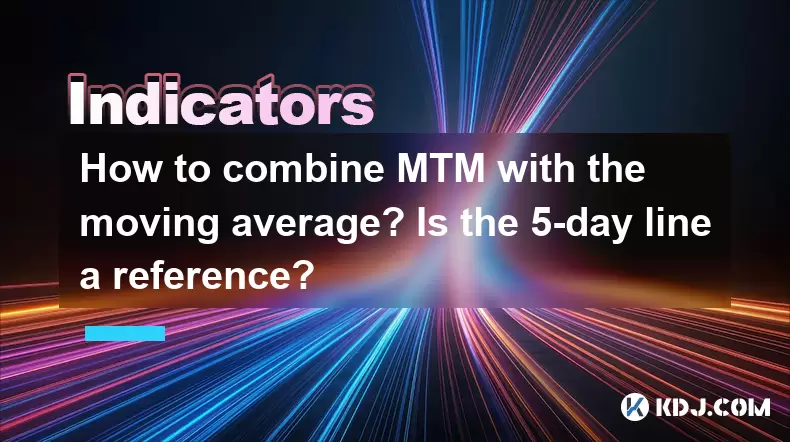
How to combine MTM with the moving average? Is the 5-day line a reference?
May 23,2025 at 03:35pm
Combining the Money Flow Index (MFI) with the moving average can provide a comprehensive approach to analyzing cryptocurrency market trends. The MFI, also known as the Money Flow Index, is a momentum indicator that measures the flow of money into and out of a security over a specified period. When combined with the moving average, traders can gain insig...
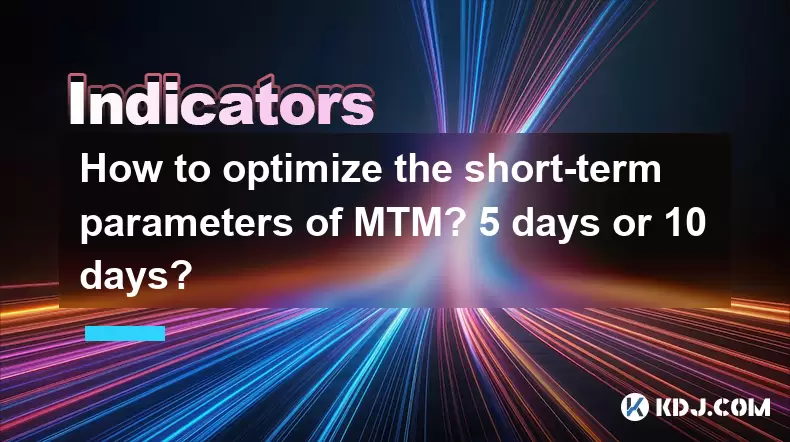
How to optimize the short-term parameters of MTM? 5 days or 10 days?
May 23,2025 at 08:07am
In the world of cryptocurrency trading, optimizing the short-term parameters of the Moving Time Model (MTM) is crucial for traders looking to maximize their profits. The MTM is a technical analysis tool that helps traders identify potential entry and exit points in the market by analyzing price movements over a specified period. The question of whether ...
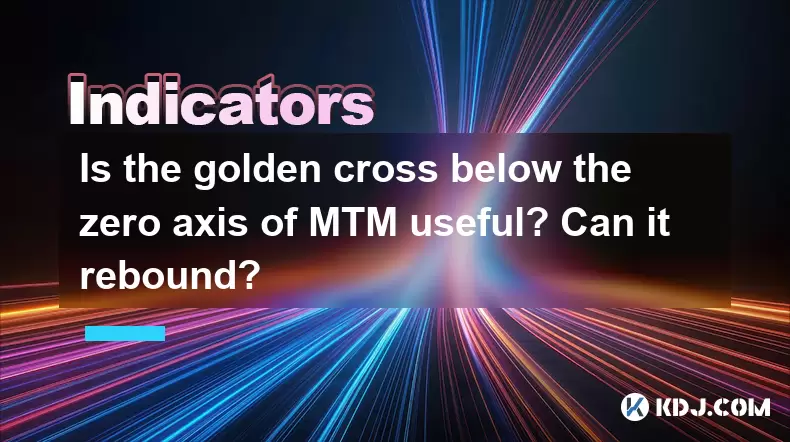
Is the golden cross below the zero axis of MTM useful? Can it rebound?
May 23,2025 at 10:28am
Understanding the Golden Cross and MTMThe golden cross is a technical analysis indicator that occurs when a short-term moving average crosses above a long-term moving average, signaling a potential bullish trend in the market. It is widely used among traders and investors to identify buying opportunities. On the other hand, the Money Flow Index (MFI) or...
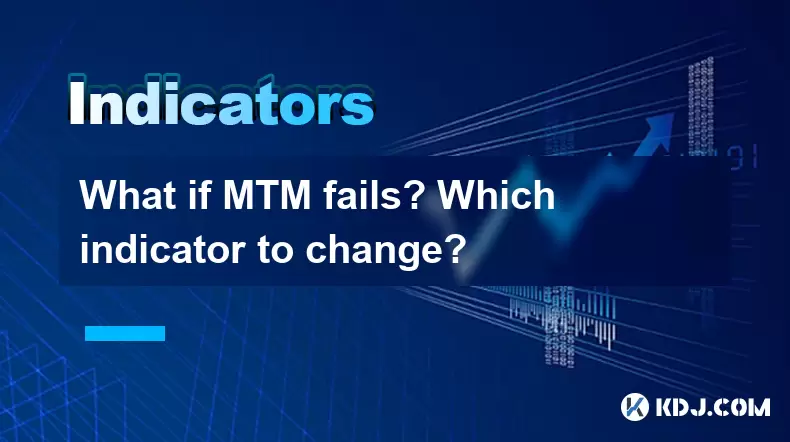
What if MTM fails? Which indicator to change?
May 23,2025 at 12:35am
Understanding MTM and Its ImportanceMoney Transfer Mechanism (MTM) is a critical component in the world of cryptocurrencies, especially when it comes to facilitating transactions between different parties. MTM ensures that funds move securely and efficiently from one wallet to another. However, like any system, MTM can sometimes fail, leading to delays,...

How does EMV perform in a breakthrough market? How will the indicator react to a false breakthrough?
May 23,2025 at 06:01pm
Introduction to EMV IndicatorThe Ease of Movement Value (EMV) indicator is a technical analysis tool that helps traders identify the relationship between price and volume in the cryptocurrency market. Developed by Richard W. Arms, Jr., the EMV indicator aims to measure the 'ease' with which prices move. In a breakthrough market, understanding how EMV pe...

Is EMV applicable in the futures market? Do the parameters need to be adjusted in a leveraged environment?
May 23,2025 at 05:15pm
The application of Exponential Moving Average (EMV) in the futures market, particularly within a leveraged environment, is a topic that garners significant interest among traders. EMV, a type of moving average that places greater weight on recent price data, can be a useful tool for traders in the futures market. However, its effectiveness and the neces...

How to combine MTM with the moving average? Is the 5-day line a reference?
May 23,2025 at 03:35pm
Combining the Money Flow Index (MFI) with the moving average can provide a comprehensive approach to analyzing cryptocurrency market trends. The MFI, also known as the Money Flow Index, is a momentum indicator that measures the flow of money into and out of a security over a specified period. When combined with the moving average, traders can gain insig...

How to optimize the short-term parameters of MTM? 5 days or 10 days?
May 23,2025 at 08:07am
In the world of cryptocurrency trading, optimizing the short-term parameters of the Moving Time Model (MTM) is crucial for traders looking to maximize their profits. The MTM is a technical analysis tool that helps traders identify potential entry and exit points in the market by analyzing price movements over a specified period. The question of whether ...

Is the golden cross below the zero axis of MTM useful? Can it rebound?
May 23,2025 at 10:28am
Understanding the Golden Cross and MTMThe golden cross is a technical analysis indicator that occurs when a short-term moving average crosses above a long-term moving average, signaling a potential bullish trend in the market. It is widely used among traders and investors to identify buying opportunities. On the other hand, the Money Flow Index (MFI) or...

What if MTM fails? Which indicator to change?
May 23,2025 at 12:35am
Understanding MTM and Its ImportanceMoney Transfer Mechanism (MTM) is a critical component in the world of cryptocurrencies, especially when it comes to facilitating transactions between different parties. MTM ensures that funds move securely and efficiently from one wallet to another. However, like any system, MTM can sometimes fail, leading to delays,...
See all articles

























